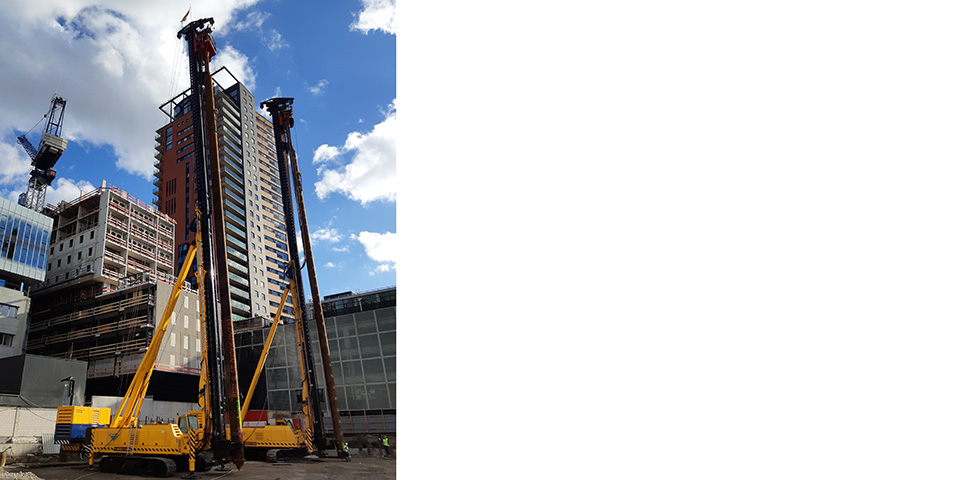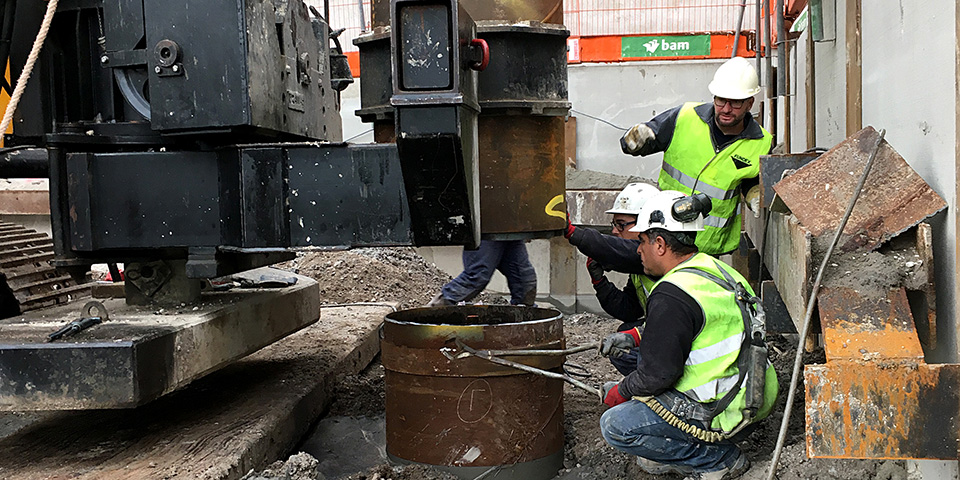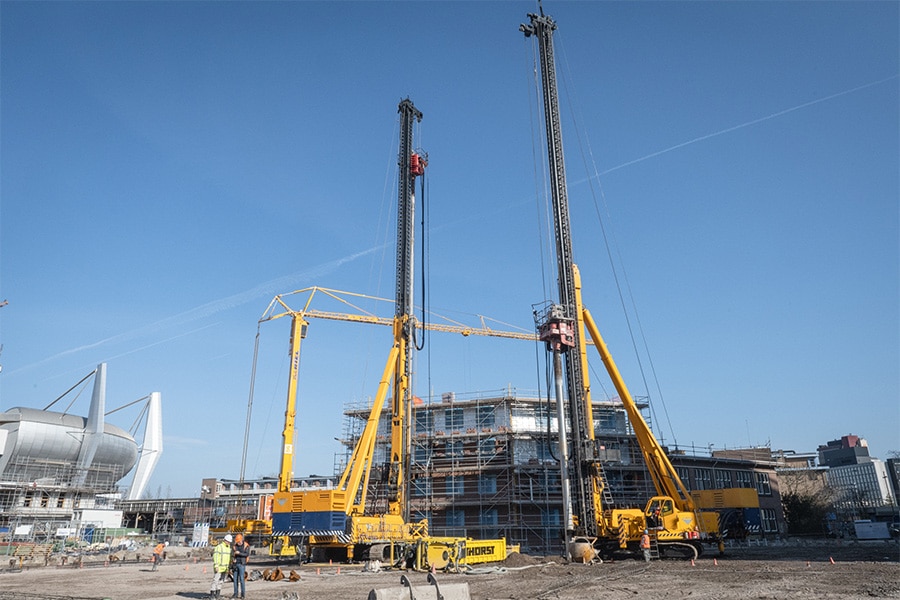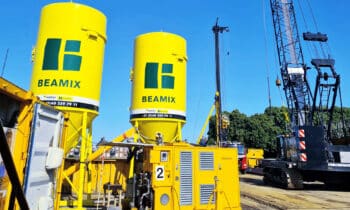
Rotterdam Zalmhavenentoren | 163 grout injection piles 66 m below NAP 'Thanks to our contribution, the tallest building in the Benelux remains upright'
The foundation for the 215-m tall Salmon Harbor Tower has been laid. It will be the tallest tower in the Benelux. Everyone will understand that beneath a tower of this height is a foundation that is at least as impressive as the tower itself.
Ed Revoort, general managing director of Funderingstechnieken Verstraeten can only agree: "It's the humble side of our work," he says. "As impressive as our achievements are, they remain underground." The Zalmhaven Tower, next to Rotterdam's Wijnhaven and Zadkine's famous monument, was founded with 163 piles 66 m long.
Step by step
Initial plans for the construction of the Salmon Harbor Tower emerged in 2015. In 2016, investors Amvest and AM received approval for the project. They then entered into discussions with BAM about implementation, which in turn approached Funderingstechnieken Verstraeten for the foundation work. "We have extensive experience in the foundation of tall buildings," says Revoort. "For example, we placed the piles under the Coopvaert building of 104 m. That height is not so impressive now, but precisely because of this we have gained a lot of knowledge."
Broad expertise
For the foundation of the Coopvaert building, Funderingstechnieken Verstraeten went through the "second sand layer" for the first time, the layer on which just about all of Rotterdam is founded. Beneath this is a loamy layer, referred to within geology as the 'Waalre Formation'. If this layer is heavily loaded, the sand layer sinks and that affects the adjacent buildings. Revoort: "For the Salmon Harbor Tower, too, we had to go through the second sand layer. Thanks to the soil displacing grout injection piles, we were able to completely eliminate the environmental nuisance."
Fright reactions
Using a test pile, Funderingstechnieken Verstraeten investigated the stability of the piles and their impact on the environment. "The first (test) probing caused quite a bit of shock," confesses Revoort. "The Waalre Formation is minimally permeable and caused quite a bit of water overpressure. After three weeks, however, this overpressure appeared to have completely disappeared. Apparently, research also requires patience."
Two segments per pole
After that, nothing stood in the way of the foundation specialist starting the real work. It brought 163 grout injection piles into the ground with a diameter of 95 cm. Each pile was constructed from two 33-m segments. "In October 2018, production of the piles began and in March 2019 we left the construction site. Thanks to our contribution, the tallest building in Benelux will soon remain upright."
The way the foundation work was received in the area was remarkable. Many people followed the work via www.SkyScraperCity.nl and found it interesting. "The followers also responded through the site and did not complain once about noise pollution. So putting a grout injection pile into the ground makes no more noise than a moving truck. That feels good."






